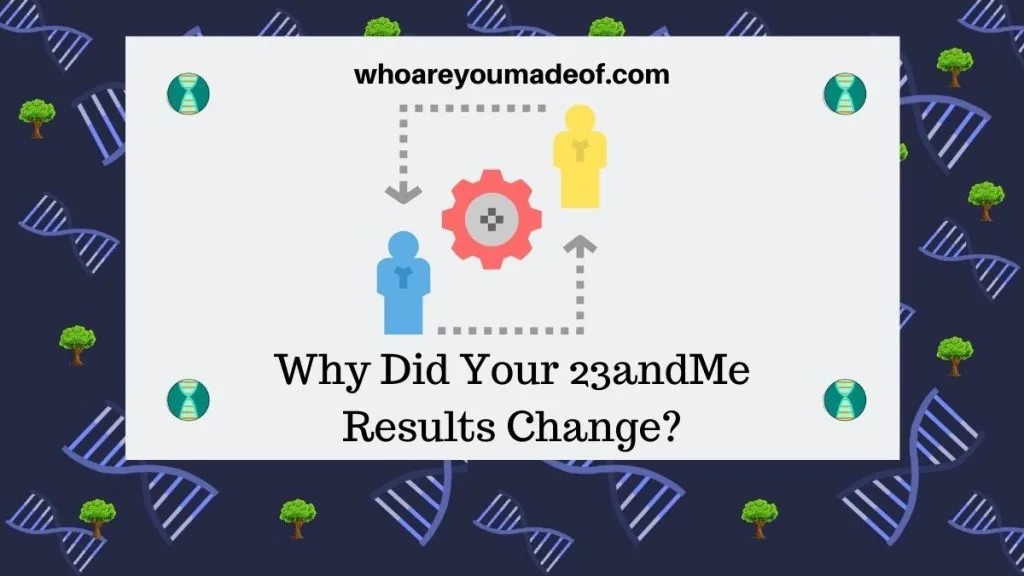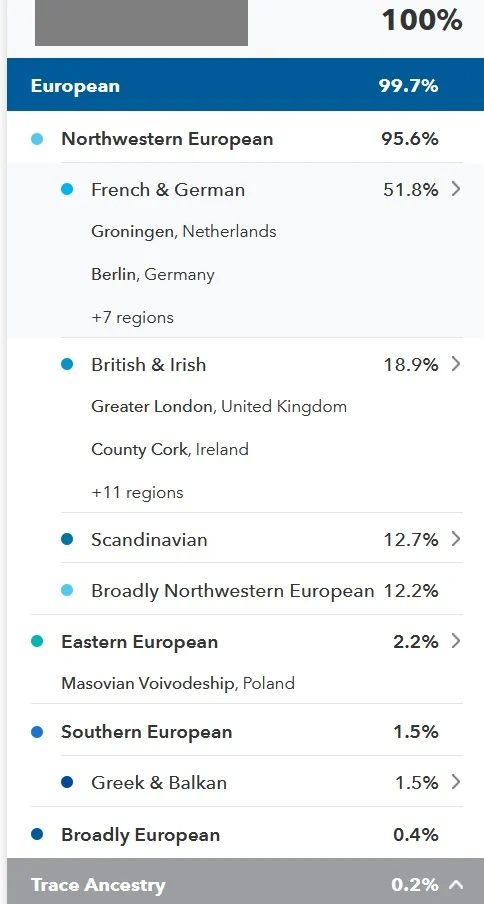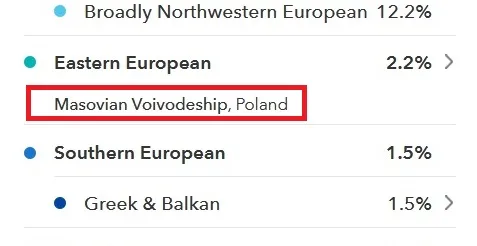Did your 23andMe results change? In this post, find out details about the latest 23andMe update and why your results might occasionally change.
While it's exciting to see our Ancestry Composition Report change, it can be slightly disconcerting. Why is it changing, and does it mean the previous results were wrong?

23andMe likes to describe its ethnicity estimate as a "living analysis" that changes along with advancements in science and technology. These changes provide us with more accurate - and more specific - DNA results.
Why did 23andMe DNA results change?
23andMe will update your Ancestry Composition report, the estimate that describes where many of your ancestors may have lived, on a regular basis. The availability of new scientific information and advances in the technology used to estimate ethnicity may prompt a 23andMe DNA results update.
The results offered by 23andMe have changed drastically over the years. For example, the first ethnicity estimate released in 2008 assigned customers to only three main regions (African, European and East Asian).
With the latest update, our DNA sample is compared with reference panels made from samples of DNA from people with deep ancestry in more than 2,000 regions of the world. In other words, our 23andMe results are now more specific than ever.
About the latest 23andMe update
The Fall 2020 23andMe update contains a few main elements. With this update, we can expect our results to get a little more specific and be more meaningful in helping us understand where our ancestors likely lived.
When you are inspecting your updated results, it's important to keep in mind that our results can only provide us insight into where our ancestors lived based on the DNA that we inherited.
Each person inherits only 50% of their DNA from both their mother and father, which leads to some DNA being "left behind". Because of this pattern of DNA inheritance, we don't share DNA with all of our distant ancestors.
Less "broadly" on ancestry report
The most important change that we will notice on our updated 23andMe results is that the percentage of our DNA assigned to a region described as "Broadly" might be reduced.
For example, if you had "Broadly East Asian and Native American" on the previous version of your results, you might see this region reduced and another region increase. The same is true for other broad regions.
The image below is from my dad's updated results. He previously had 20.2% of his DNA show up as matching the Broadly Northwestern European region. His new results show only 12.2% of his DNA matching the area:

We all love more specific regions on our results. It's the best way to reveal things about our ancestry that we might not be able to learn by building our family tree.
Changes to recent ancestor locations
You may have noticed that some of the regions on your 23andMe results list a specific location within a country or larger region. For example, you might see County Cork, Ireland or Gronigen, Netherlands.
With the latest algorithm update, we might see recent ancestor locations added for regions that previously didn't have one.
I've been very interested in researching my father's Eastern European ancestry, so I was glad to see a recent ancestor location show up for him in his Eastern Eurpean > Poland region. My dad's results previously showed him matching Poland at 2.1%.

This means that my father likely had an ancestor living in Masovian Voivodeship, Poland within the past 200 years. How cool is that?
Less "unassigned" on ancestry report
You may have seen "unassigned" on your DNA results before. Unassigned DNA is simply DNA that cannot be confidently estimated to be from any particular place.
While it's normal to have a percentage of DNA that is in the unassigned category, it's nice to see this number decrease. Many people will see a portion of their DNA from the unassigned category reassigned to a specific region.
How often does 23andMe update results?
If you want to know how often your 23andMe Ancestry Composition results have changed and the dates of the changes, you can view the "Change Log". The change log is simply a record of the dates of the changes that have occurred on your results.
If you take a look at the change log, you will notice that the very first change that occurred will be on the date that your results were first ready. The other dates that you see will be times when other 23andMe updates occurred.
For example, take a look at my husband's change log:

My husband first got his results back on November 17, 2019. The 23andMe 2020 update is his first update.
Conclusion
Conclusion
I hope that this post has helped you understand more about why your 23andMe results changed, and why it's actually a good thing that they did. I'm always so excited when I find out about an ethnicity estimate update because I know that I might learn something new.
If you have any questions about something that you have read in this post, or if you would like to discuss a change in your own results, I would love to hear from you in the discussion below.
Thanks for stopping by today!


John Doe
Monday 2nd of December 2024
if there anyway to view your old results? I'm planning to identify as white because my old result had me with .01 percent European, while i actually have .01 percent European in me so thats more justification for me to identify then just felling a certain way imo. But with the updates i went from having all kinds of asian to just now purely one type of Asian.
Mr Barry Fearn
Sunday 30th of July 2023
My original results said 48% British, with the centre being in London. 48% Irish, with the centre being in Dublin. There was a little French, German and Scandinavian. Now the results are very different, with British and Irish being combined at 35%. The original report also said that I was a direct descendant of Jesse James the outlaw and King Chalamagne of France. Is it likely that my next report will revert back to somewhere near the original one?
Lori Ann Clayton
Tuesday 8th of March 2022
I went from being trace back to Napoleon , to having no French in me at all. It is constantly changing . I am done with 23 and me.
Diane Maurer
Wednesday 14th of April 2021
I went from no longer being Italian and North African to all of a sudden being Jewish!!! I’m done with them.